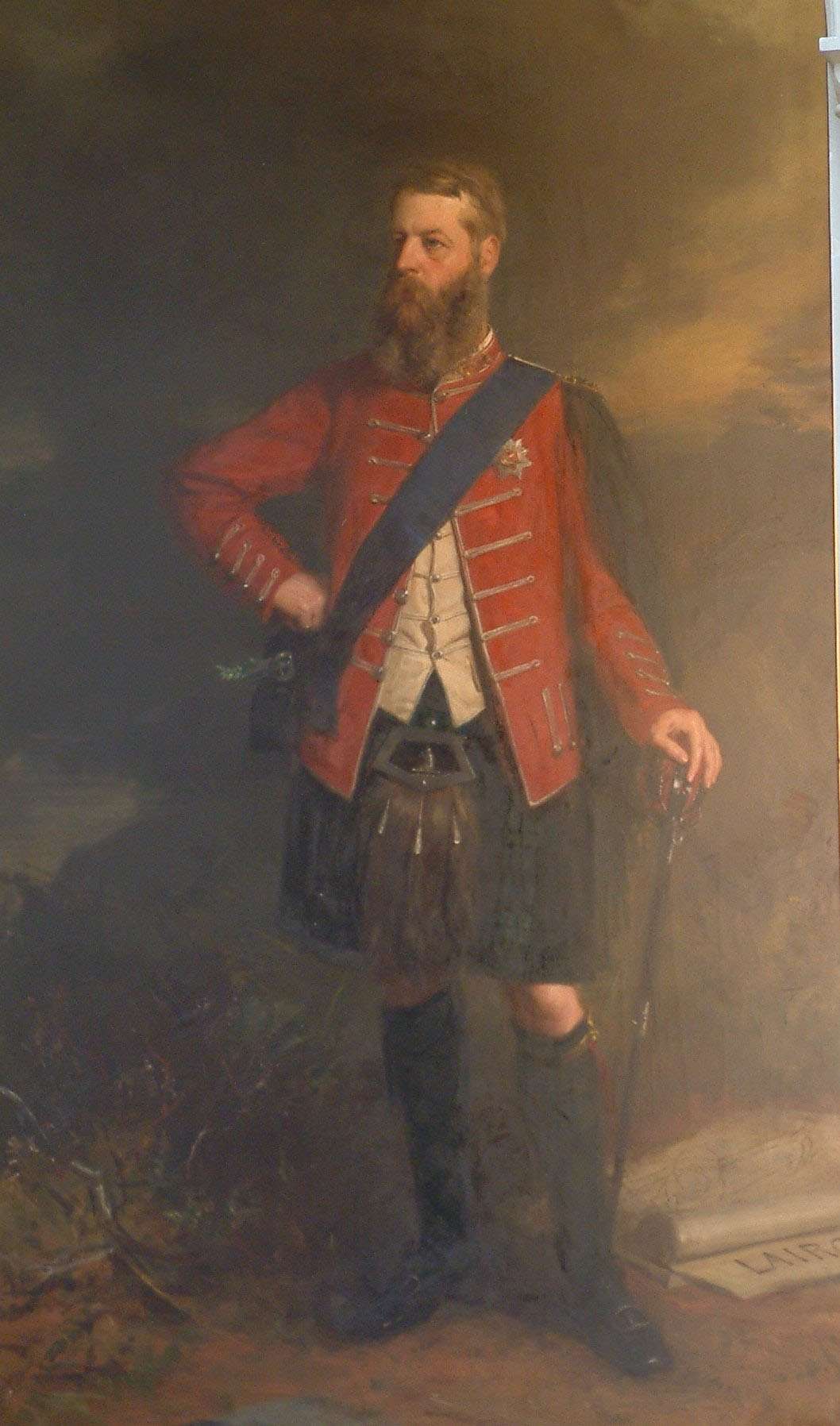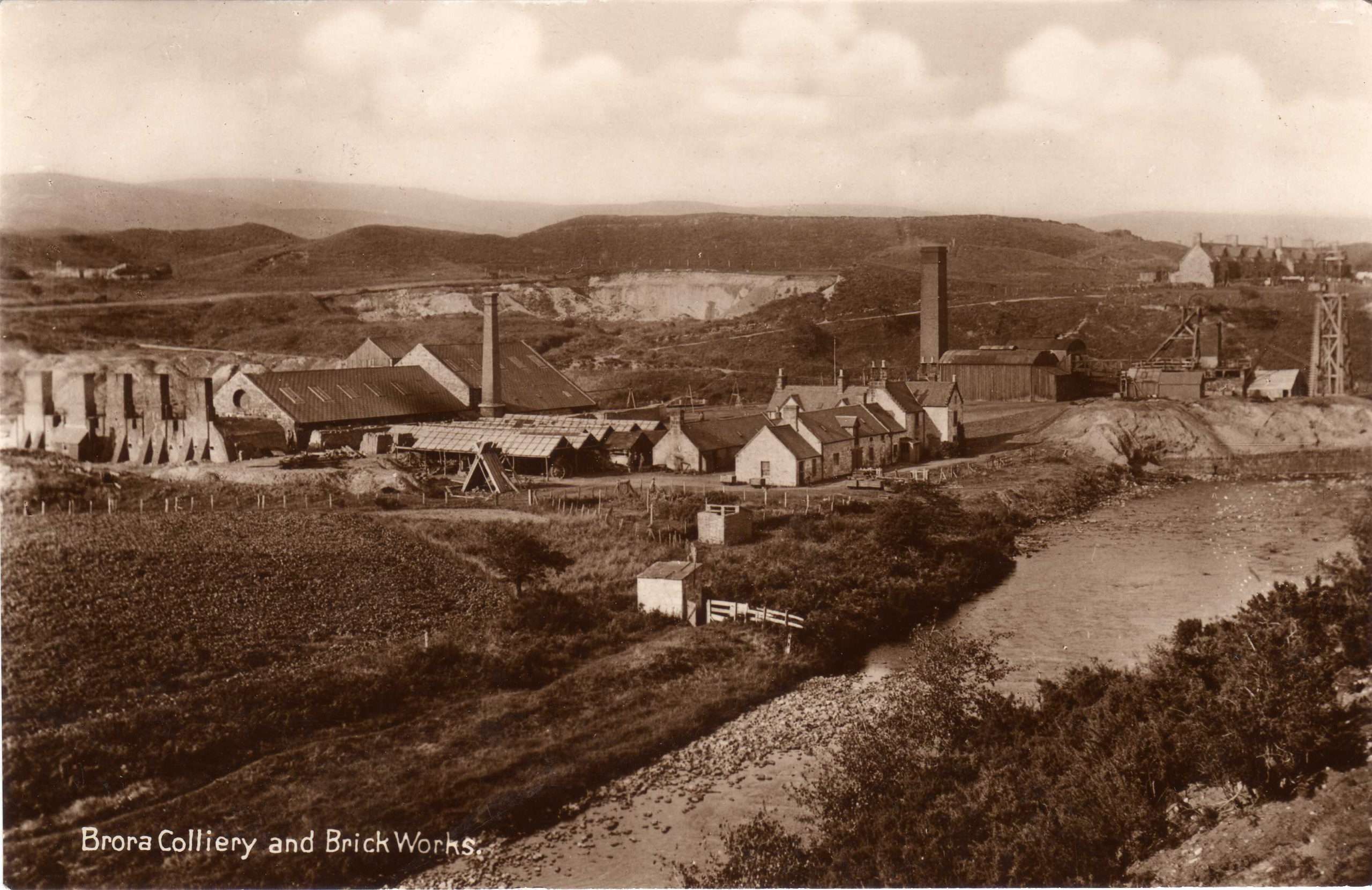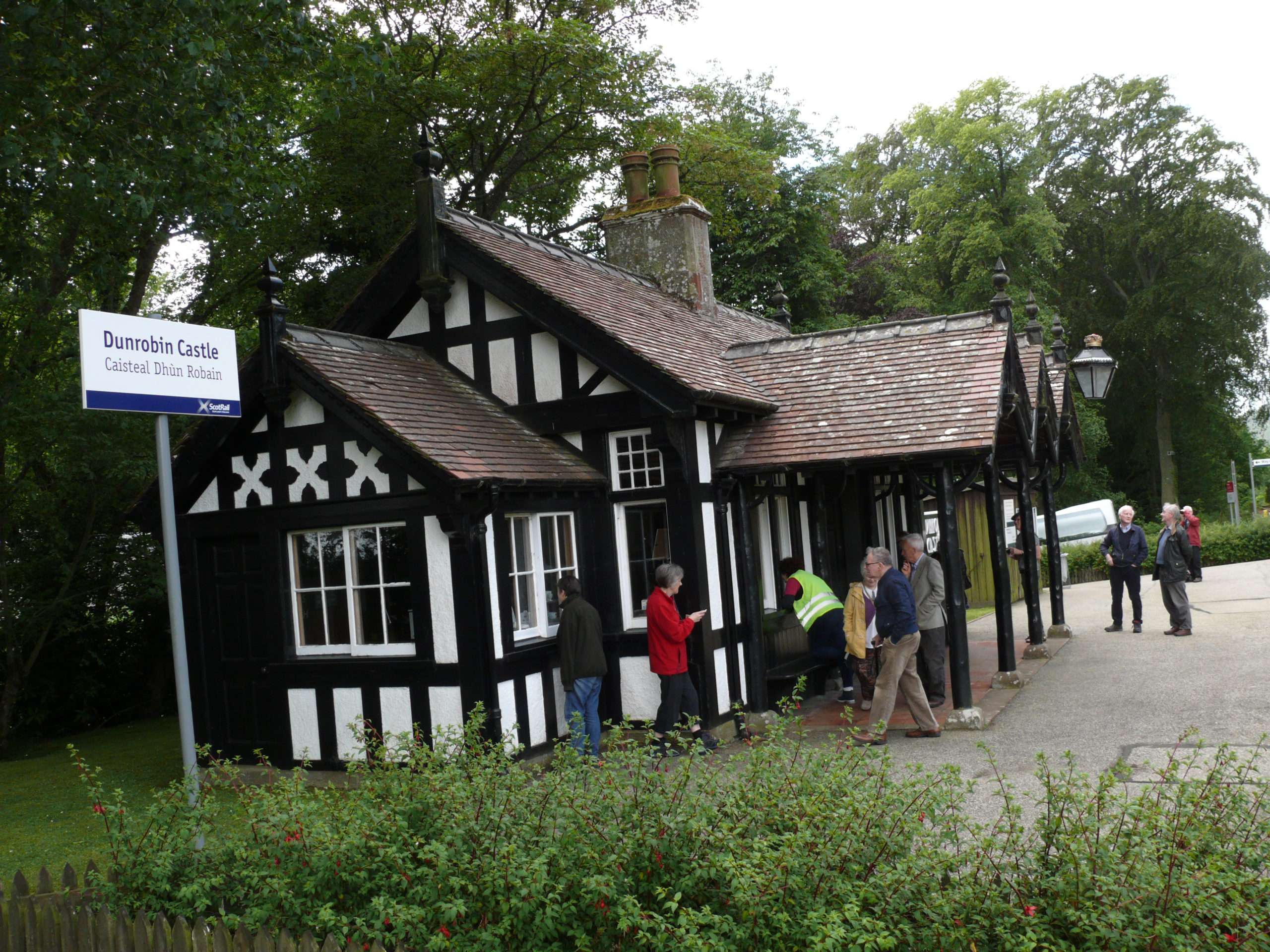The arrival of the railway at Brora, Sutherland in June 1871 was a special day especially for the 3rd Duke of Sutherland who had great plans for Brora. He was interested in engineering, particularly steam engines, and had spent some time at the London & North Western Railway works in England at Wolverton, north of Milton Keynes so that he could learn about railways.
Another project was the coal mine at Brora. How is there a mine so many miles from the Carboniferous coalfields in Fife and Central Scotland? Dorset and Devon are world famous for their Jurassic Coast, but there is another around Brora on the north east coast of Scotland. The Beatrice Oilfield off the coast of Caithness, the only production platform visible from mainland Britain, is part of this geology. What we know about Brora Jurassic coal is that it is not very good quality and contains sulphur so is smelly when burnt. On a still winter day in the 19th and 20th century, Brora might have had an unpleasant odour of bad eggs emitting from its chimneys!
Passion of railways

The 3rd Duke with his passion of railways, was chairman of the Sutherland Railway which was authorised to go as far as Brora but ran out or money and only reached Golspie. He was so anxious for the railway to go further north that he financed it himself to go to Helmsdale and including a private station for Dunrobin Castle. By November 1870 the line was complete from Dunrobin to Helmsdale, but difficult engineering work meant that there was a gap between Golspie and Dunrobin. Until the line was fully open in June 1871, a twice day service which could be used by the public, ran between Dunrobin and Helmsdale.
In September 1870 the Duke had an inauguration ceremony for his station when Princess Helena, Queen Victoria’s daughter and her husband, Prince Christian of Schleswig-Holstein travelled with the Duke’s locomotive bedecked in flowers, to Helmsdale and back. Once complete the railway from Golspie to Helmsdale opened on 19th June 1871 and Dunrobin Station became private. Not content with that the Duke had got together funding for the railway to go the far North Coast at Thurso and Wick which opened in 1874. The building on the platform at Dunrobin Station had a somewhat Wild West appearance and the signal box was across the signal line. There was a shed to keep the duke’s railway carriage and a siding to park it when it was going to be used. His engine lived at Golpe where there was a workshop. The building at the station today was built by the duke’s son, the 4th Duke in 1901.
Steam plough

The rather English looking building incorporated the signal box in the lower north facing extension. With the arrival of the railway the 3rd Duke decided that the time had come to reopen the mine and brickworks which had been set up by the 1st Duke as their output could be transported to Inverness and the South. Perhaps they would be more profitable than in the past,
He reconstructed the old tramway together with a new branch that went to the station. However, the railway on the approaches to Brora from the south runs along a raised beach so the goods yard and the station were higher than the existing tramway. The branch line had to climb at a gradient of one in ten and then continue on the level to the station. A further short branch went to the duke’s engineering works which was capable of manufacturing anything from a nut to a steam engine. Horses and sometimes a small 0-4-0 saddle tank steam locomotive called Florence, chugged back and forth drawing the hutches loaded with coal on the journey to the station.
Edward James, the colliery manager from Staffordshire commenced production of coal from early 1874 producing between twenty-five and thirty tons per day. This development cost the duke just over £9,600, quite a sum for those days. Another project was a steam plough. The duke was concerned that a lot of the land on his estate was so poor, the farms did not produce enough to support the human and animal population. He was impressed when in Egypt by the steam ploughs which had brought into production previously unusable land. In 1871, he arranged for a fifty-acre field at Uppat, near Dunrobin to be ploughed using a special plough from Fowlers of Leeds, presumably transported there by rail. Very satisfied with the results, by 1878 some 28,000 acres had been developed in Sutherland involving work for five hundred men. One large area was by Loch Shin, near Lairg. The duke built a lunch box there so that he could show off his ideas for improving the land.
The industrial town of the Highlands
In 1874, the duke invited a group of mining and mechanical engineers including David Jones, Highland Railway Locomotive Superintendent, to see some of his enterprises including the work at Loch Shin. They travelled north as far as Georgemas, near Thurso on the line from Helmsdale and viewed a machine for converting peat into charcoal. They descended into the coal mine where a four-foot seam was being worked and finally saw a display of dynamite. Finding workers for the mine and brickworks may have been a problem. In the main street of Brora there is a row of very English looking brick terrace houses that the duke built for his staff. As the coal was not very good quality, it was mixed with better coal from the south which was transported by rail to Brora. The mixture was then sent south by rail to be sold to the public in Inverness and elsewhere. During this period Brora became the industrial town of the Highlands.
The 3rd Duke died in 1892 aged sixty-three and was succeeded by his son, Cromartie who carried on some of his Father’s enterprises including the replacement of the old station building and driving the railway engine. The coal mine and brickworks continued under different father ownership until 1974. In the 21st century, a heritage centre explains further about these interesting developments.
By: Anne-Mary Paterson

